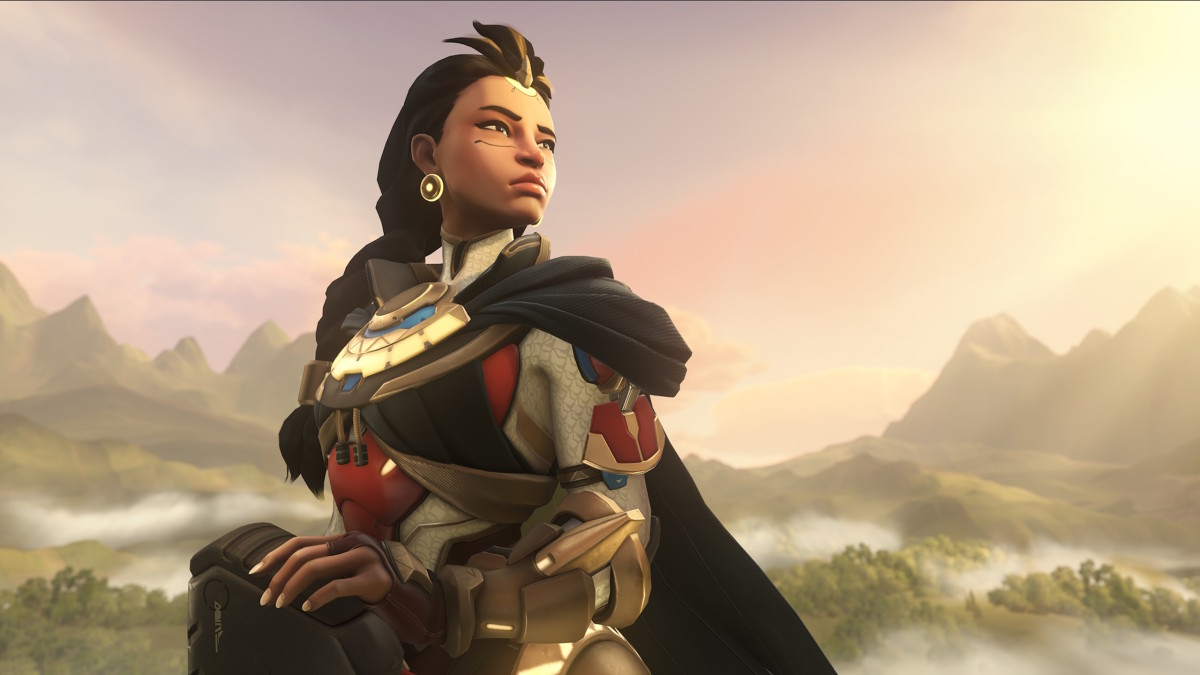Overwatch 2 Season 6 hero Illari is a fresh twist on playing support

Overwatch 2 Season 6's new support hero is Illari, a fresh take on support and representation who fits perfectly with the multiplayer game's emphasis on damage and mobility. I had the chance to play as Illari ahead of the season's launch and walked away impressed with her versatility and the effortless blend of a high skill ceiling with approachability.
Illari instantly feels fresh and exciting to use. Her primary fire unleashes a bolt of energy that deals a surprising amount of damage and will almost certainly be nerfed, while the alt fire option emits a beam of healing energy. It runs out pretty quickly, similar to Moira’s healing, so the emphasis is definitely meant to be on Illari’s healing pylon.
The pylon is a construct that generates a burst of healing every second or so and covers a large area. Illari can fasten it nearly anywhere, so if you use the environment well, you can keep your team safe for a long time and still contribute to offense while your opponents struggle to find and disable it.

Illari’s mobility skill launches her in a given direction and sort of pushes enemies back, if you’re close enough. The mobility is impressive, but I struggled to figure out what scenario this might be useful in unless you need a quick vertical escape.
Finally is her ultimate, the first support ult that damages foes. It marks enemies and launches an explosion of sunlight at them, and given the short timeframe you have to aim and mark with it, this skill works best in crowded areas, like Flashpoint control zones.
Blizzard’s hero design team approached Illari with two main goals. Hero designer Pierro Herrera says the idea of a hero who used several aiming mechanics floated around the office for a long time, and it found form at last with Illari. Every skill requires a different approach to aiming. For example, you need to keep close range and sightlines in mind when placing her healing pylon. Her charge gun primary attack functions like a regular rifle, albeit one without a scope, but her alt-fire healing is a beam attack that requires more precision.
That’s not even getting into the complexities of her mobility skill, a blast that shoves opponents and launches Illari in a chosen direction, and her ultimate that marks enemies and deals extra damage.

Blizzard made Illari with their gaze firmly fixed on the competitive scene, like much of Overwatch 2’s content, though Herrera tells me there’s a good reason for that. Lifeweaver, Overwatch 2’s previous support hero, gave the team a bit of trouble. Despite a varied skillset that lends itself to multiple playstyles, people just weren’t playing as Lifeweaver and felt that there wasn’t enough reason to pick him over someone else.
Testing Illari at a “high competitive level” helped the team guarantee she would have several situations where she performs particularly well.
Despite building her with competitive in mind, the team believes she’s approachable enough for newcomers and those less skilled with aiming – hello, it’s me – to still have fun playing, since Illari allows for a degree of specialization. You can focus on pure support with the pylon and healing beam, lean into damage with the surprisingly powerful charge rifle and ult, or do a mix of both without sacrificing damage or healing.
Illari is meant to be a new type of support, in short, and she’s a new type of hero as well. Blizzard narrative designer Joshi Zhang tells us that the team wanted to do something different with the sun motif and keep Illari from being your usual “sunny disposition” character.
So they made her traumatized instead. Illari’s past is dark, filled with loss and regret, and Zhang says that comes through in her battle lines and interactions with other characters. Illari may be the youngest hero in the game, but she’s not afraid to get her hands dirty to get what she wants.

Blizzard also dug deep into Peruvian culture to create an authentic representation that goes beyond the usual archetypes.
“We wanted to bring core parts of [Inca] culture and represent it the best way we know how so everyone can celebrate the culture together,” Zhang says.
Illari’s voice lines include Peruvian slang and dialect patterns, but one of the key parts of her character is her hair. Senior character designer Rakan Khamash says they made several adjustments to the hair after speaking with Peruvian women and learning about hair care to get the braids’ representation just right.
Khamesh also says her “badass” side comes through in emotes and other voice lines, though we didn’t get to see those during the test phase.
Illari is available in the Overwatch 2 Season 6 battle pass, and if you miss her this season, you can complete a set of hero challenges to unlock her for free later.
